Kandla Grey sandstone is a compact, fine-grained sandstone from eastern and southeastern Rajasthan, India. Sandstone has formed over millions of years through sedimentary processes. This sandstone is classified as a subarkose, a type of sandstone with a significant amount of quartz and a lesser presence of feldspar and other minerals.
The formation of Kandla Grey involves the deposition of sand in ancient riverbeds or shallow marine environments. Over time, these sand particles, along with mineral-rich water, undergo lithification—where the sediments are compacted and cemented together due to pressure and mineral deposits, transforming them into solid stones. The presence of laminations, or layers, within the stone is a result of variations in sediment deposition over different periods.
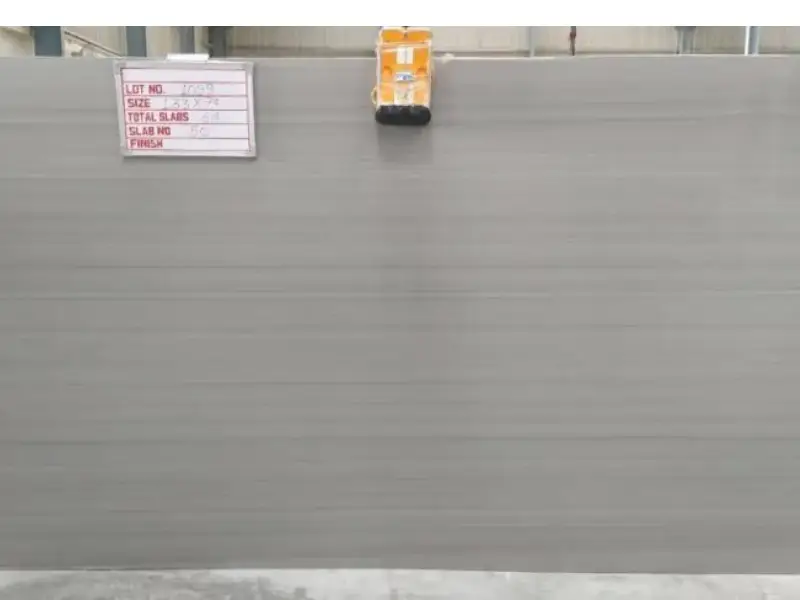
Natural Colours & Variations
Kandla Gray Sandstone, also known as Bhilwara Gray or Silver Sand Sandstone, is a very durable, grey-coloured natural stone, thanks to its high quartz content. While the colour is generally consistent, it can be graded into two shades—Dark Gray and Light Gray—to meet the preferences of discerning customers.
The quarries of Kandla Grey are vast, covering a 125 km belt in the Bhilwara and Boondi districts of Rajasthan, North India. This expansive region is known for producing high-quality Kandla Grey granite, which is widely sought after for both domestic and international markets. T
As Kandla Grey sandstone is entirely a natural stone, it will have slight variations in colour, tone, and pattern, adding to its unique appeal. These are the features of stone and now flaws. When wet, the colours become more vibrant, while they appear subtler when dry, before the stone absorbs moisture. When discussing moisture, one of the key concerns with sandstone is its porosity. In this context, we will be discussing deeper into how Kandla Grey sandstone performs regarding this characteristic based on extensive research.
Kandla Grey sandstone derives its colour primarily from its mineral composition. Let’s explore what are these minerals contribute to both its colour and durability.
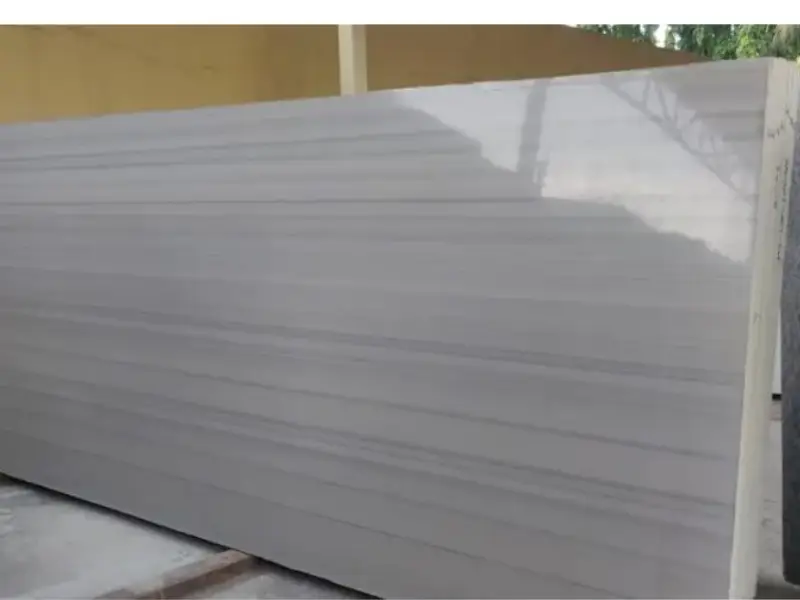
Ligh Grey Kandla Sandstone
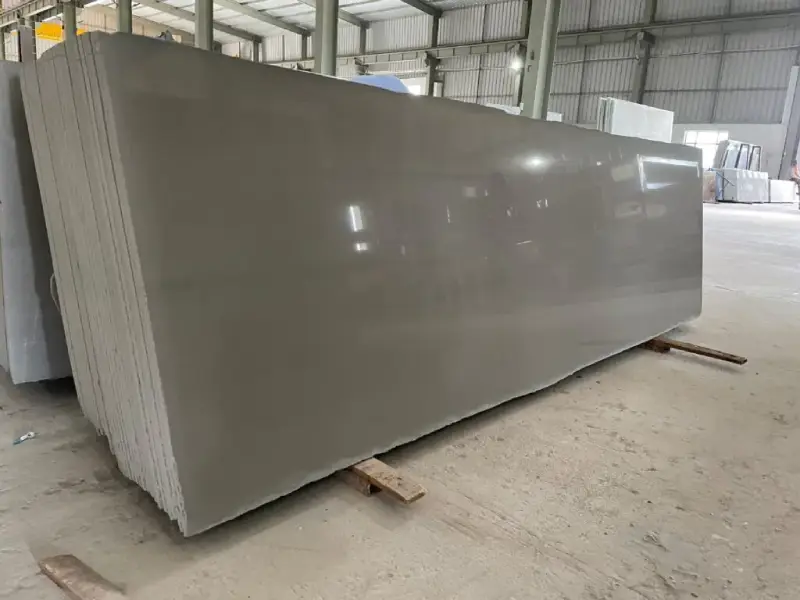
Dark Kandla Grey Sandstone
Mineral Composition:
Kandla Grey sandstone is composed predominantly of:
- Quartz (~80%): Monocrystalline quartz grains averaging about 100 µm in diameter. This high quartz content significantly contributes to its grey hue.
- Feldspars (~15%): These include both fresh and weathered feldspar grains.
- Other minerals (~5%): It includes mica (mainly muscovite), rutile, zircon, and occasional tourmaline. The darker layers visible in the stone are rich in denser minerals like rutile and zircon, while muscovite is aligned parallel to the layers.
ALSO READ | Sandstone Colours: Origins, Applications, Varities, and Consistent Selection
Kandla Grey Sandstone Porosity
According to research on Kandla Grey sandstone, it is distinguished by its notably low porosity, positioning it as one of the least porous sandstones available. The study reports an open porosity of 3.02%, with over 75% of pore throats measuring between 50 and 10 nanometers. Such a fine and compact pore network effectively limits water absorption and enhances the stone’s resistance to moisture-related deterioration.
This low porosity is a key factor in its performance under freeze-thaw cycles and salt weathering, making it highly suitable for outdoor applications. Compared to other sandstones, Kandla Grey’s porosity is closer to that of granite, providing it with superior durability in environments where weathering poses a risk. This scientific characterization underscores Kandla Grey’s viability as a durable building material, especially in challenging climates.
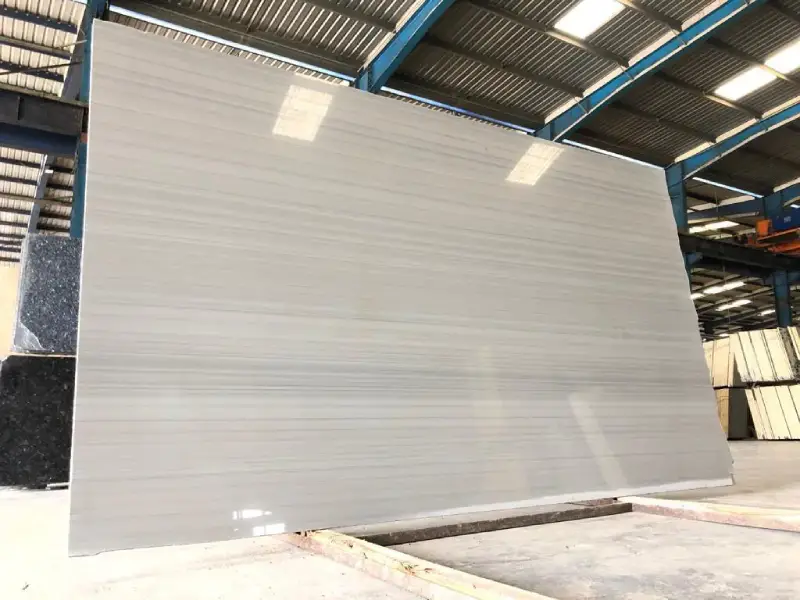
Finishes of Kandla Grey Sandstone
Kandla Grey comes in a variety of finishes, such as natural cleft, flamed, polished, leathered, honed, bush hammered, sawn, acid washed, antique finish, and sandblasted, allowing it to fit a range of different applications and aesthetic preferences. This flexibility makes it a versatile choice for both interior and exterior projects.
Kandla Grey sandstone is available in both calibrated and uncalibrated forms. However, we specialize in calibrated slabs (Cutter Size and Gangsaw size) and tiles, offering them a limited range of finishes. For more details about our products, please feel free to contact us with your specific requirements.
Please note that Kandla Grey sandstone in a leather finish will not have the same smoothness as a granite. Due to its compact grain and high quartz content, achieving a leather finish like granite is challenging. However, it still provides a tactile texture and a luxurious appearance.
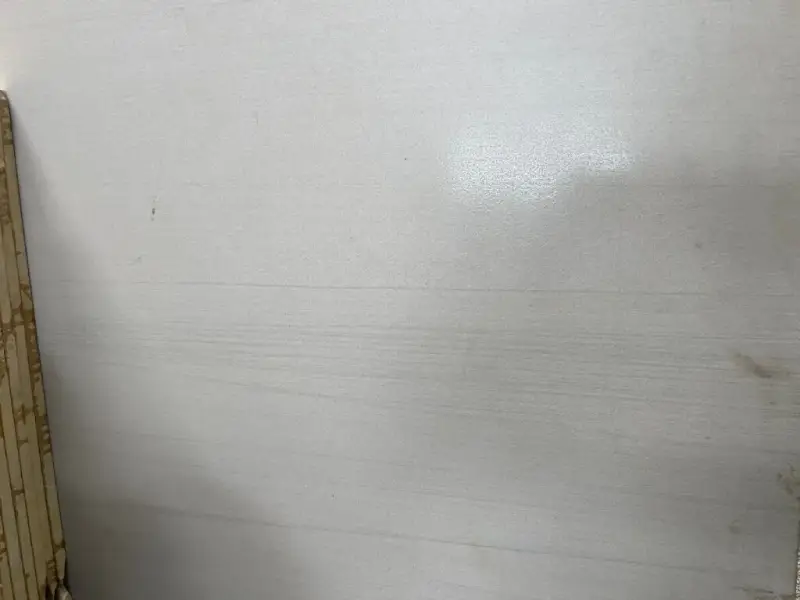
Leather Finish Kandla Grey Sandstone
Application of Kandal Grey Sandstone
Kandla Grey sandstone provides a warm, organic, and inviting feel, enhancing the ambience of indoor spaces. Its good thermal properties help maintain a comfortable indoor temperature, which is also beneficial for energy efficiency.
Kandla Grey is also highly suitable for outdoor use due to its inherent durability and favourable performance in environmental conditions, making it a practical choice for paving, facades, and other exterior applications.
Kandla Grey sandstone, with its high quartz content, is naturally resistant to acids, alkalis, and salinity, which makes it suitable for environments where chemical exposure is a concern, such as in chemical industries. Additionally, its resistance to thermal variations adds to its durability, making it an excellent choice for building near the seashore, where both salinity and temperature fluctuations can be challenging. Its durability also makes it ideal for flooring and wall facings in such demanding conditions.
Demand of Kandla Grey Sandstone
The largest market for Kandla Grey is in Europe, where it is marketed as grey quartzite, with the UK and Germany being key destinations. In the UK, it is sold under the name Raj Green, while in Germany, its popularity stems from its resemblance to local sandstones. North America is another strong market for Kandla Grey, and in recent years, demand has also risen in the Gulf countries. In the Gulf region, finishes like flamed, flamed plus brush, and honed are particularly popular. In these markets, Kandla Grey is commonly referred to as grey quartzite.
In terms of volume, an estimated 800 metric tons (MT) of Kandla Grey are exported daily. Domestically, the consumption of this stone in India is around 3000 MT per day, and this demand continues to grow steadily. The substantial export and domestic consumption highlight Kandla Grey’s popularity and its significant role in the global and local markets.
Sealing Your Sandstone
If your sandstone is light in color, you might consider sealing it, as stains can be more noticeable. However, sealing isn’t required, and there are plenty of sealant options depending on the result you want. Some sealants simply protect the stone, while others can enhance its color. Sealing your sandstone paving can also protect it from general wear, like fading, which may happen over time.
Summary
Kandla Grey Sandstone, with its fine grain, uniform texture, and low porosity, Kandla Grey maintains its aesthetic quality over time, even in outdoor environments. The stone is less likely to suffer from surface scaling or discolouration caused by weather exposure, meaning it retains its appearance over time regardless of environmental factors.
All of our Indian sandstone slabs are extracted from the Rajasthan region in the northwest of India and are sourced ethically to guarantee the highest quality for our customers.
Looking for a strong and beautiful stone for your next project? Kandla Grey Sandstone is a great choice! With its low porosity, it resists moisture and weathering, making it ideal for patios, driveways, and even indoor flooring. Plus, we offer different finishes to match your style!
Get in touch with us at Stone Galleria to find out more about our Kandla Grey slabs and how they can work for you!


 Fact Checked
Fact Checked




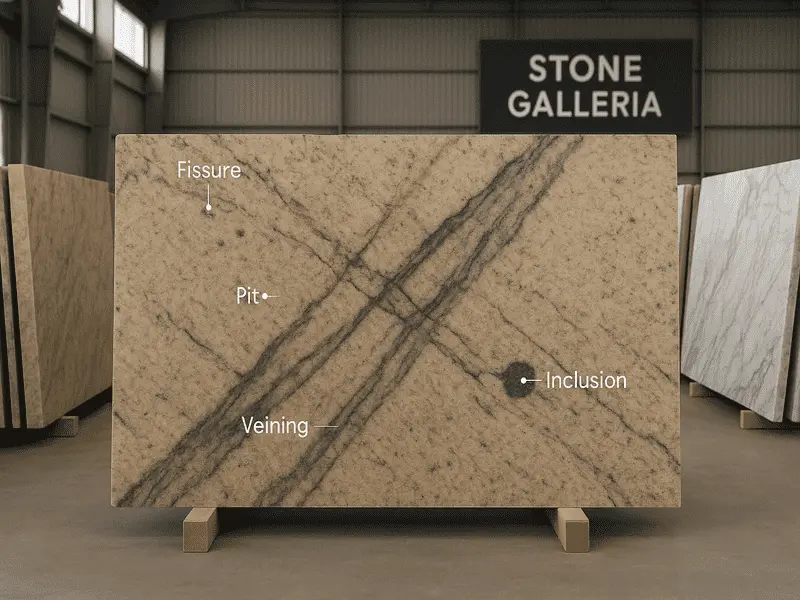
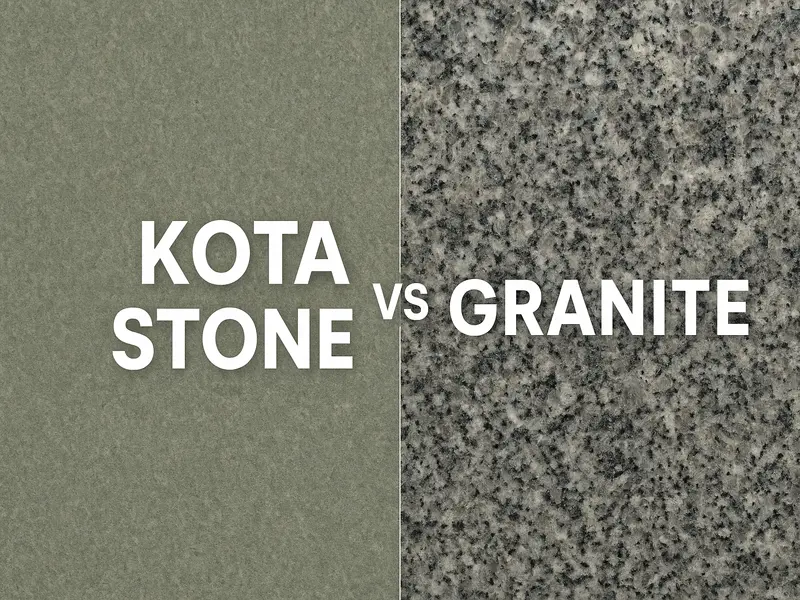



![Latest GST on Granite Slabs & Blocks [2025 Chart + HSN + Price Examples]](https://stonegalleria.in/admin/images/blog/latest-gst-on granite.webp)




